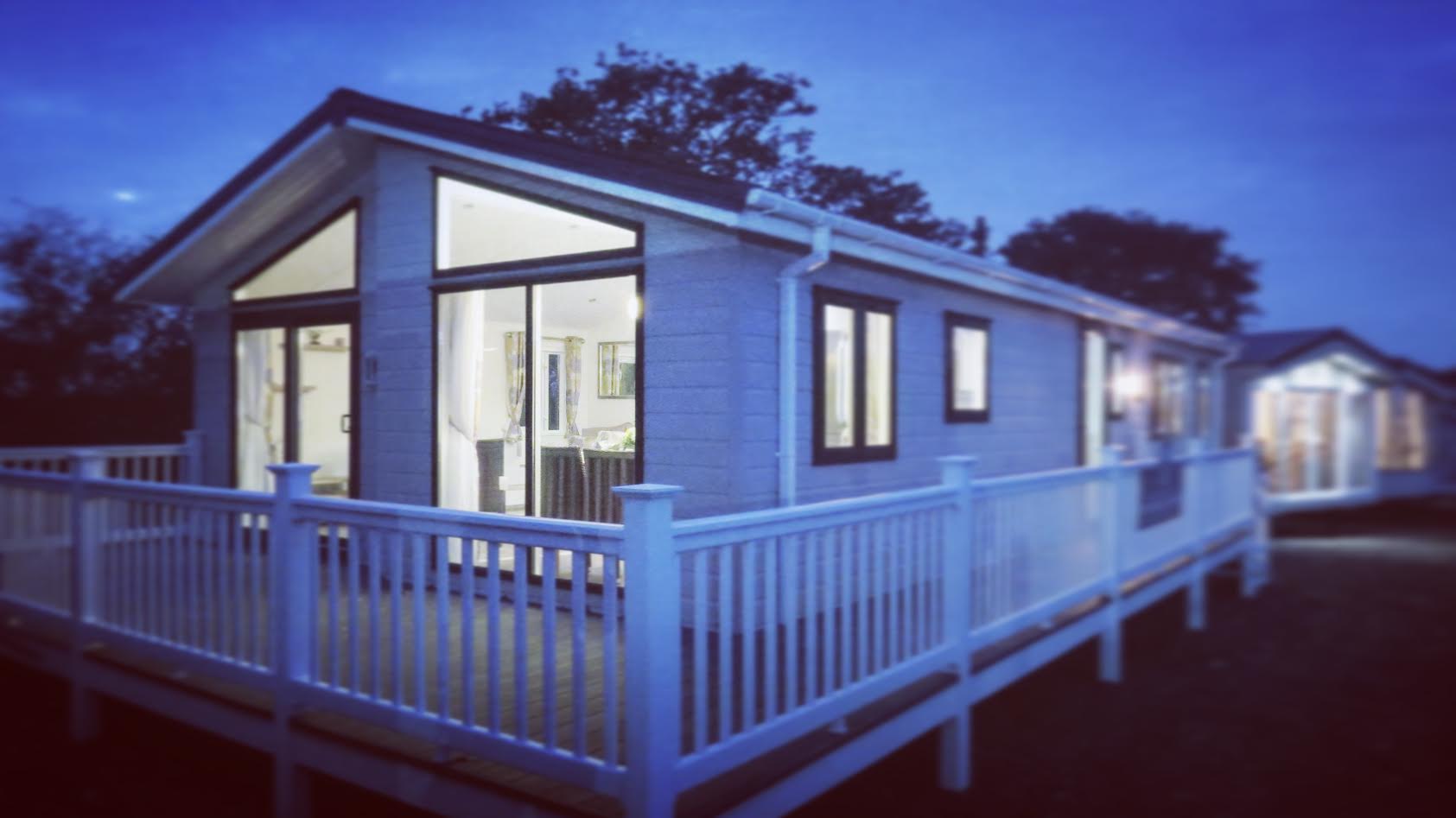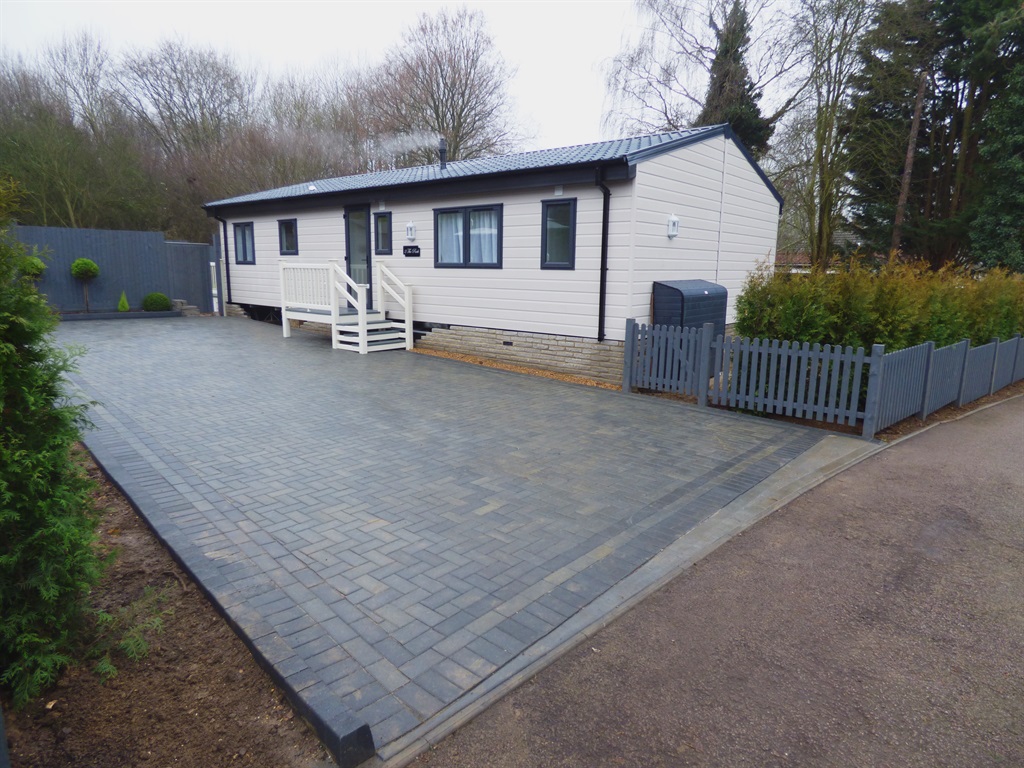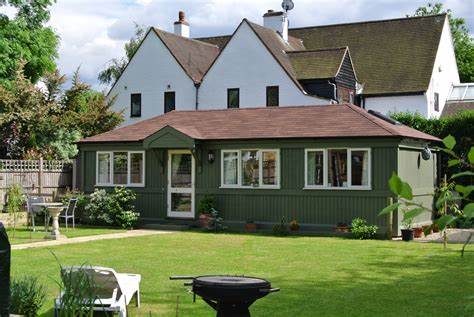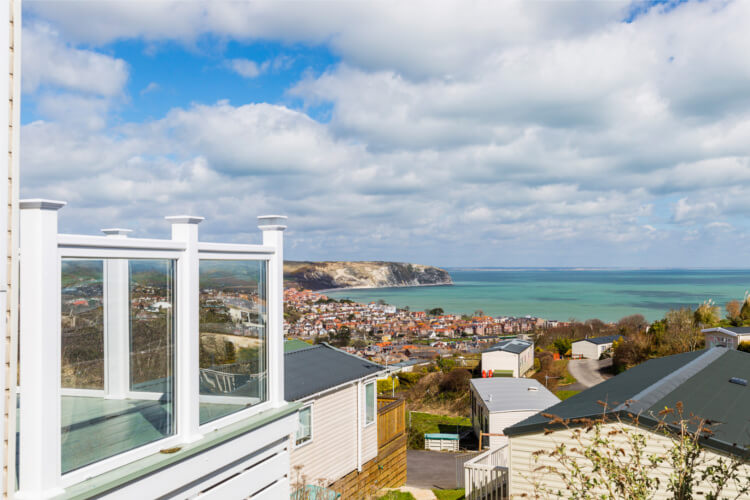Please CLICK HERE to see our wide range of homes ….
Please note: This information is intended as a guide only and therefore not legal advice. Each council has different rules/interpretations, so it is wise that you check with your local planning authority for more detailed information.
Do I need planning permission for a static caravan on private land?
If you are thinking of siting a mobile home within the curtilage of your property for the exclusive use of a family member, and you can answer “Yes” to BOTH of these questions, you will not need planning permission:
- Does the annexe (caravan) meet the legal definition of a mobile home in the Caravan Act? (Section 29 of the Caravan Sites Act 1968 states that the structure must be physically capable of being moved from one place to another by road and that the twin unit must be no more than 20 metres long, 6.80 metres wide and the living accommodation no more than 3.096 metres high)
- Will the granny annexe remain ancillary to the main house?
In simple terms, planning permission is required for placing a static caravan or a luxury lodge on land UNLESS it is being used as ancillary accommodation for a house, such as for a dependent relative or holiday accommodation for visiting family members. It is best to check with your local planning authority to determine the specific laws and regulations in your area, as you may be subject to additional restrictions if you live in an Area of Outstanding Natural Beauty (AONB), or conservation area, for example.

What is the definition of planning permission?
The official definition of planning permission is defined in Section 55(1) of the Town and Country Planning Act 1990. It is the “formal permission that must be obtained from a local authority before development or a change of use of land or buildings”. Therefore, the key points here are the words “development” and “change of use”. Essentially, planning permission is determining whether you are allowed to do any development work, or change the use of the land.
The Caravan Act.
Caravans, including mobile homes up to 65 x 22 ft, can be sited in the direct garden of a house without planning permission if they are used by members of the household as additional living space not as independent accommodation.
A ‘granny annexe’ can be used in a garden without planning but you would need to illustrate how the use of the caravan supports the use of the house and how it will not become a separate or independent dwelling. For example, the people who sleep and wash in the annexe will have access to use the cooking facilities of the main house, or vice versa, or if the annexe relies on the services (gas, water, sewage) of the main dwelling. The structure must also be located in the actual garden (the curtilage of the main dwelling), not in surrounding land (eg. paddock or field).
A static caravan, mobile home, or twin lodge is regarded as an article of moveable personal property known as a ‘chattel’ and there is no public law preventing one being kept in someone’s garden or driveway, but there are laws that regulate the ‘use’ of the land, and any change in use. So provided the caravan is within the garden of the main home, then no change in use of the home’s land has taken place. However, if the caravan is being used with no connection to the main house, the local planning authority could decide that an unauthorized ‘material change of use’ has occurred, for which planning permission will be required.
The “curtilage” of the land is classed as your drive and garden in this case. It does to extend to other land (see Location Test below).
(getting a bit confused ? Why not get in touch by the form below to go through your options)
The definition of a caravan when considering an annexe.
The definition of a caravan in law is defined by the Caravan Sites and Control of Development Act 1960, Section 29. It states as follows;
“Caravan” means any structure designed or adapted for human habitation which is capable of being moved from one place to another (whether by being towed, or by being transported on a motor vehicle or trailer) and any motor vehicle so designed or adapted, but does not include (a) any railway rolling stock which is for the time being on rails forming part of a railway system, or (b) any tent.
Case law has given further understanding of the definition of a ‘caravan’. Case laws are new interpretations of law that are made in court and can therefore be cited as precedents. To be deemed a ‘caravan’ a habitable structure must conform to a size and mobility test. This is an evaluation of how the caravan could be moved and a measurement of its physical size. A further ‘construction’ test applies to twin-unit mobile home type caravans.
Size test
The maximum size of a caravan is limited to 20m x 6.8m or 65ft x 22ft and less than 3.05m internal height in the Caravan Sites Act.
Structure/Mobility Test
Caravan means any structure designed or adapted for human habitation which is capable of being moved from one place to another.
Location Test
If the location of the caravan is considered not to be within the residential curtilage of the dwelling then it will require planning permission.
The definition of a ‘curtilage’ is usually a garden, but ‘can’ include parking areas/driveways, vegetable plots, children’s play areas, and stables (where the horses are kept for pleasure rather than agricultural use).
Use Test
If the use of a caravan is not considered to be a part of or incidental to the use of the house and has become a separate dwelling, providing all the normal facilities for day-to-day living, then it could be considered a material change of use or a separate residential unit. Thus the caravan would require permission.
Applying for planning permission has a high chance of refusal, and there are likely to be restrictions and/or conditions attached as to what is permitted if approval is granted, eg. the style must be ‘in keeping’ with the area or the primary dwelling.

Planning permission for a static caravan on agricultural land.
If you wanted to put a static caravan as staff accommodation on to agricultural land, you would need planning permission. That is the simple answer.
If it is for a short period of time, then you can get away without planning permission. There are some exemptions that you need to pay attention to. You can place the caravan on the land as long as it is incidental to the use of the land.
It needs to be pointed out that it is not the actual caravan that changes the use of the land, rather what the caravan is used for. If it is used to store supplies used for the land, there should be no issues. Living in it is a different story.
You are entitled to stay in the caravan for 28 days without issue. You are also allowed to stay in it when it is related to the land. A good example is during lambing season, you may be required to be nearby at all times during that period. Outside of good reasons like this, there may well be issues. This also applies to seasonal forestry workers and farm workers. You are entitled to house them on site while they work there. You are also allowed to site a caravan under the Health and Safety legislation. It can be set up as a ‘welfare unit’ to provide toilet facilities, water and tea breaks, and somewhere to shelter out of the rain and cold.
A word of warning though, do not be tempted to lay down patios or decking, as it gives the impression of permanence and your local council will see it that way. The impression you always want to give is one of a temporary nature.
Planning permission for a static caravan during a self-build project or renovation.
The simple answer is that it depends on your local council. In principle, you are allowed to place a static caravan on land where a build is taking place “self build” . The caravan needs to be related to the build i.e. you are living there while the building work takes shape. You cannot rent it out separately by taking advantage of this exception.
Councils do take differing positions on this so when you are getting planning permission for the main build, it is always best to include the mobile home on the application. There can be no issues later in that case as it was all agreed. Take note, you are still expected to pay council tax even though you are living in a caravan prior to the main build being completed. You may not be living in the house but you are still living on the land.
If you want to be certain that the existing use of a building is lawful for planning purposes or that your proposal does not require planning permission, you can apply to your local planning authority for a ‘Lawful Development Certificate’ (LDC) or Certificate of Lawful Existing Use or Development (CLEUD). It is not compulsory but many customers prefer to have one for their own peace of mind.
Please contact one of our team if you require any further guidance, or a copy of our Planning Information Pack with example letters, location plans etc. Simply call us on 0800 246 1206 or fill in your details below:
INTERESTED IN LUXURY LODGES : SEE OUR SISTER COMPANY LANDSCAPE LIVING ……………











